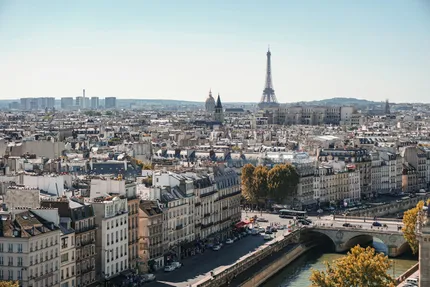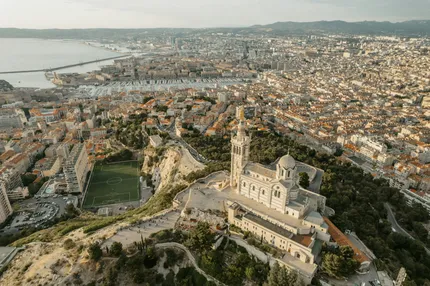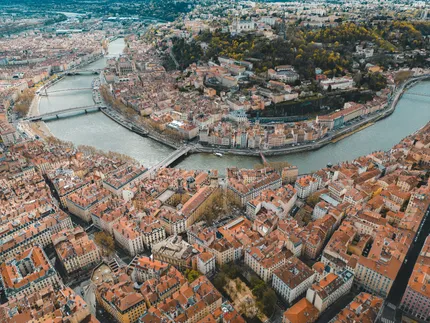CityTouring
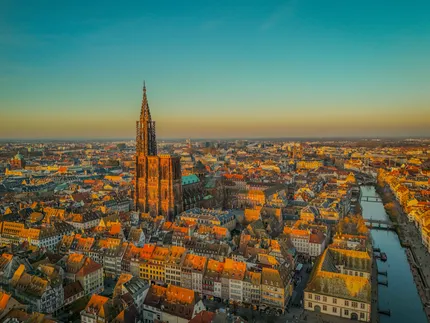
City trip to Strasbourg
FranceStrasbourg, the charming capital of the Alsace region in northeastern France, seamlessly blends French and German influences, offering a unique cultural experience for travelers. Nestled along the banks of the Rhine River, the city is famed for its stunning architecture, particularly the Gothic Cathedral of Notre-Dame, with its awe-inspiring astronomical clock and remarkable rose window. Strolling through the historic La Petite France district, you'll be captivated by the half-timbered houses, cobblestone streets, and picturesque canals that make the area feel like an enchanting storybook setting. Strasbourg is also home to the European Parliament, a symbol of the city's central role in European politics. The city's rich culinary scene is a delight for food enthusiasts, offering traditional Alsatian dishes such as tarte flambée and Baeckeoffe, complemented by stellar local wines. With its vibrant Christmas market, one of the oldest in Europe, Strasbourg truly comes alive during the festive season, drawing festive holiday-goers from all corners of the world.
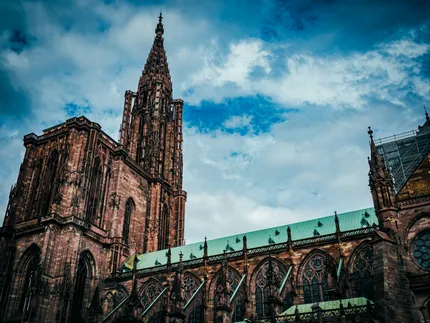
Strasbourg Cathedral
The Strasbourg Cathedral, an iconic Gothic structure, is renowned for its stunning facade, intricate astronomical clock, and towering spire, which was the world's tallest building until the 19th century. Located in Strasbourg, it's a UNESCO World Heritage Site, attracting millions annually to admire its vast stained glass windows and breathtaking views from the observation platform.
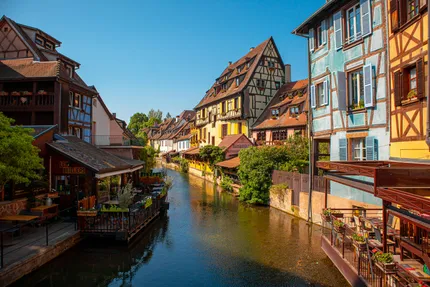
Petite France
Petite France is a picturesque district in Strasbourg, known for its charming half-timbered houses and narrow, winding streets. Situated on the Grande Île, this historic quarter was once home to fishermen and tanners. Visitors can enjoy a stroll along the canals, explore quaint shops, and savor local Alsatian cuisine in traditional restaurants. The area captures the essence of medieval Strasbourg beautifully.
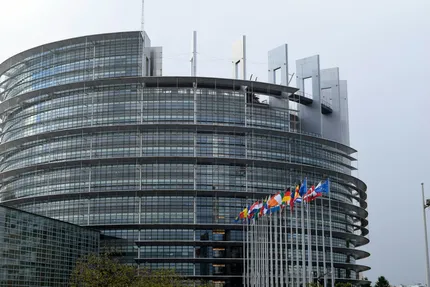
European Parliament
The European Parliament in Strasbourg hosts plenary sessions where important legislative discussions and decisions take place. Visitors can explore its impressive architecture and observe debates from the public gallery, gaining insights into the European Union's legislative process. Guided tours offer a deeper understanding of EU politics and operations. Note that advanced booking is often required for visits.
Strasbourg is an excellent destination for history enthusiasts, architecture admirers, and cultural voyagers seeking an immersive experience in a city that sits at a historical crossroads between France and Germany. Its pedestrian-friendly city center makes it accessible for families and older travelers alike, while couples can indulge in romantic strolls along the scenic canals of La Petite France. Art and history buffs will appreciate the abundance of museums, including the Musée Alsacien and the Museum of Modern and Contemporary Art. Foodies will find endless delight in the region's culinary offerings, with opportunities to savor classic French cuisine with a distinctive Alsatian twist. Nature lovers and outdoor enthusiasts can take advantage of the city’s parks, gardens, and nearby countryside for leisurely bike rides or picnics. Furthermore, Strasbourg's vibrant calendar of events, from music festivals to cultural parades, ensures there is something stirring for every visitor. In all, Strasbourg offers a balanced mix of cultural depth, tranquil beauty, and vibrant festivities, making it an irresistible choice for diverse traveler profiles.
Three top reasons for a city trip to Strasbourg
- Strasbourg's stunning Notre-Dame Cathedral offers breathtaking Gothic architecture, highlighted by its impressive astronomical clock and 142-meter spire, providing sweeping views of the city and surrounding landscapes.
- The charming neighbourhood of Petite France features picturesque half-timbered houses, winding canals, and cobblestone streets, providing an enchanting glimpse into Strasbourg's rich history and vibrant local culture.
- Strasbourg is home to the historic Kronenbourg Brewery, offering guided tours and tastings that highlight the city's long-standing beer-making tradition and its influence on the Alsatian cultural identity.
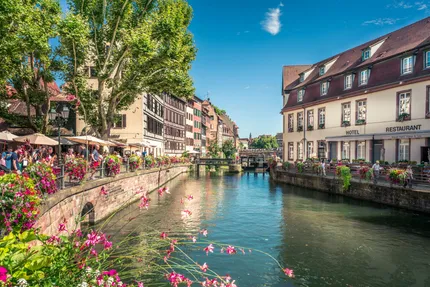
Best time to visit Strasbourg
The ideal time to visit Strasbourg is during the late spring (late May to June) when the weather is mild, pleasant, and perfect for walking tours and outdoor cafe seating. Alternatively, the enchanting holiday season from late November to December is a favorite among visitors looking to immerse themselves in the magic of Strasbourg's Christmas market. During these months, the city is adorned with festive lights and decorations, and the atmosphere is lively, if a tad chilly. Avoiding the cold winter months between January and early March is recommended unless a calm and less crowded visit is preferred.
More activities and things to see in Strasbourg:
Palais Rohan
Palais Rohan in Strasbourg, a masterpiece of classical French architecture, dates back to the 18th century. Once the residence of the bishops, it now hosts three museums: the Musée des Beaux-Arts, the Musée Archéologique, and the Musée des Arts Décoratifs. Its majestic interiors and significant art collections make it a central cultural attraction in the city.
Barrage Vauban
Barrage Vauban in Strasbourg is a 17th-century bridge and defensive structure built to protect the city. Renowned for its panoramic terrace, it offers sweeping views of the UNESCO-listed Petite France district and the canals of Strasbourg. This pink sandstone edifice showcases historical engineering, allowing for both water management and as a military fortification element. It is a key architectural and historical landmark in Strasbourg.
Musée Alsacien
The Musée Alsacien, located in Strasbourg, showcases the rich cultural heritage of the Alsace region. Housed in a historic building, the museum features a collection of folk art, traditional costumes, furniture, and everyday objects, offering insights into rural life from the 18th to 19th centuries. Visitors can explore the reconstructed interiors and learn about regional traditions and craftsmanship.
Parc de l'Orangerie
Parc de l'Orangerie, located in Strasbourg's European District, is the city's oldest park, offering 26 hectares of nature and charm. Known for its lush gardens, picturesque lake with rowboat rentals, and a small zoo, it's a popular family destination. The park also features play areas for children and an elegant pavilion that hosts exhibitions and events.
Place Kléber
Place Kléber, Strasbourg's largest square, is a bustling hub within the city's historic center. Often hosting markets, events, and festivals, it features a prominent statue of General Kléber, the square's namesake. Surrounded by shops, cafes, and the iconic Aubette building, it is a popular spot for both locals and visitors to relax and absorb the vibrant city atmosphere.
St. Thomas Church
St. Thomas Church in Strasbourg is a significant Protestant place of worship known for its architectural blend of Romanesque and Gothic styles. It houses an impressive Silbermann organ, famously played by Wolfgang Amadeus Mozart, and a monumental mausoleum of Marshal Maurice de Saxe. The church's rich history and stunning interiors make it a must-visit for architecture enthusiasts and music lovers alike.
Covered Bridges
Strasbourg's covered bridges, known as Ponts Couverts, are a historical landmark in the Petite France district. These 13th-century structures were part of the city's medieval fortifications. While the wooden roofs are no longer present, the stone towers remain, offering picturesque views of the canals and city. They represent an important part of Strasbourg's architectural and historical heritage.
Le Vaisseau
Le Vaisseau in Strasbourg is a science center designed for children, offering interactive and educational exhibits on topics like space, technology, and nature. This engaging venue fosters curiosity and discovery with hands-on activities and workshops. Ideal for families, it combines entertainment with education, ensuring an enriching experience that captivates young minds and encourages learning through exploration.
Marché de Noël
The Marché de Noël in Strasbourg is a historic Christmas market, dating back to 1570, transforming the city into a festive wonderland. Located around the stunning Strasbourg Cathedral, it offers hundreds of stalls with local crafts, traditional Alsatian ornaments, and festive treats. Known for its enchanting atmosphere, it's a don’t-miss event for those seeking an authentic European holiday experience.
Getting around in Strasbourg
Strasbourg is a highly walkable city, with many of its attractions located within a compact area on the Grande Île, making it ideal for exploring on foot. Cycling is also very popular, and the city has an extensive network of bike lanes and rental options. For public transportation, the CTS (Compagnie des Transports Strasbourgeois) operates an efficient tram and bus network that covers the city well. The trams are particularly useful for getting across the city and to the suburbs. A car is not necessary for getting around, especially in the city center where pedestrian zones abound. If you plan to visit areas outside Strasbourg, such as the Alsace wine route, a car can be more practical, though regional trains and buses can also serve well for nearby excursions.
Getting to Strasbourg
Strasbourg is accessible through various convenient means of transportation. Strasbourg Airport (SXB) is located about 10 kilometers southwest of the city and offers flights to several European destinations. For more international flights, Frankfurt Airport (FRA) and Basel-Mulhouse Airport (BSL) are good alternatives. Strasbourg is also well-connected by train, with the TGV offering high-speed services to and from Paris in just under two hours. The SNCF train network links Strasbourg to other major French cities and international destinations like Frankfurt and Luxembourg. For buses, FlixBus and other operators provide services connecting Strasbourg to many European cities. The city's central location in Europe makes it an accessible destination by both air and land.
